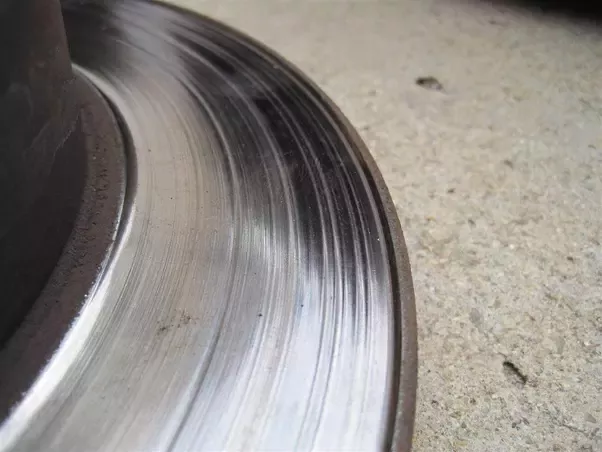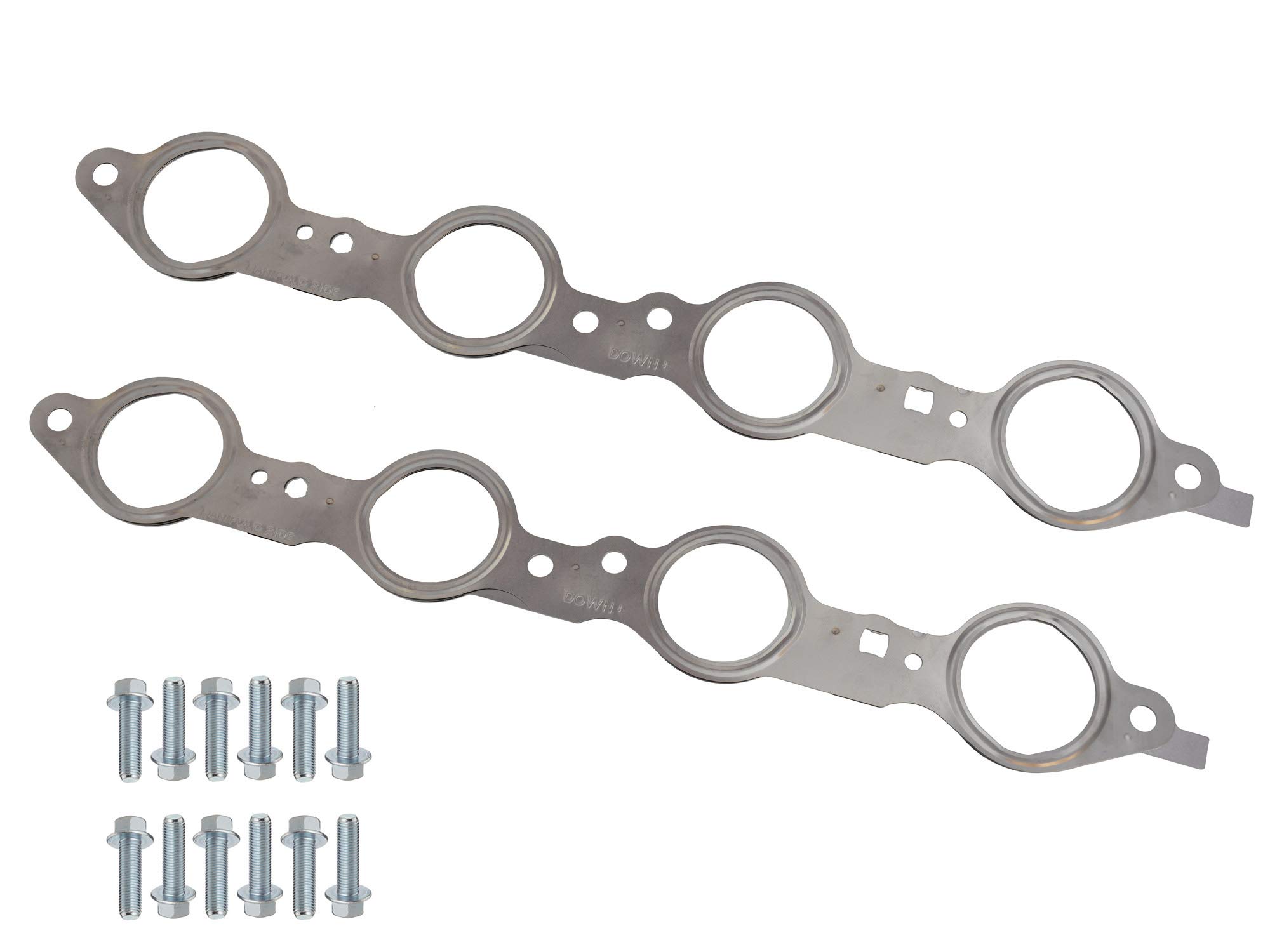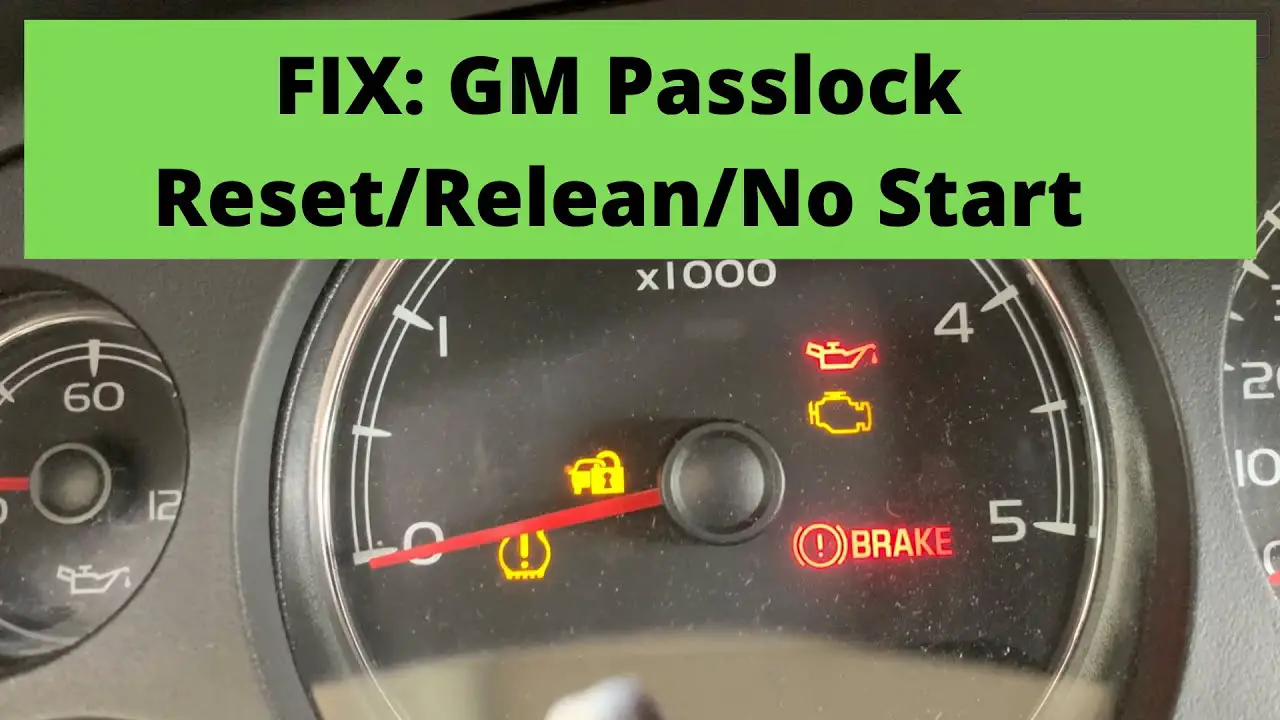Brake rotors stand as a critical component in the symphony of automotive safety, facilitating the swift transformation of kinetic energy into heat during the deceleration process.
The integrity of these rotating discs, however, is not impervious to the ravages of time and driving conditions.
A recurring concern among motorists and automotive enthusiasts alike is the development of grooves in brake rotors, a phenomenon that can compromise braking performance and overall safety.
In this exploration, we delve into the multifaceted factors that contribute to the formation of these telltale grooves.
From the influence of heat and brake pad composition to the nuanced effects of driving conditions, this inquiry seeks to unravel the intricate relationship between brake rotor grooving and vehicular dynamics.
As we navigate through the labyrinth of causes and effects, a roadmap to informed maintenance practices and preventive measures will emerge, guiding enthusiasts and conscientious drivers toward safer, more efficient braking systems.
What are the different types of brake rotors, and how does each type contribute to or mitigate the occurrence of grooves?

Brake rotors come in various types, each designed with specific characteristics to address different driving conditions and performance needs. Understanding these types is crucial for comprehending how they contribute to or mitigate the occurrence of grooves.
-
Vented Brake Rotors
Vented rotors consist of two flat surfaces separated by vanes or fins, promoting effective heat dissipation. The design reduces the likelihood of grooves by minimizing heat-related damage.
-
Slotted Brake Rotors
Slotted rotors feature shallow channels on the rotor surface, aiding in the expulsion of brake dust and gases. However, improper pairing with brake pads may accelerate wear and contribute to grooving.
-
Drilled Brake Rotors
Drilled rotors have holes drilled through the surface, enhancing heat dissipation and providing a cosmetic appeal. However, they may be more susceptible to cracking, potentially leading to grooves.
-
Cross-Drilled and Slotted Brake Rotors
Combining features of drilled and slotted designs, these rotors aim to improve cooling and performance. Their effectiveness in mitigating grooves depends on proper usage to avoid excessive stress on the rotor surface.
-
Solid Brake Rotors
Solid rotors are uniform and lack the features of other types. Common in less demanding conditions, they may be more prone to heat-related grooving, particularly under heavy and prolonged braking.
What causes Grooves in Brake Rotors?
-
Excessive heat during braking
Excessive heat during braking stands as a primary factor contributing to the formation of grooves in brake rotors. As a vehicle decelerates, the kinetic energy is converted into thermal energy, generating intense heat at the point of contact between the brake pads and rotors. When this heat surpasses the optimal operating range of the braking system, it can lead to detrimental consequences.
High temperatures can induce uneven thermal expansion and contraction of the rotor surface, creating stress points that may eventually manifest as grooves. Additionally, the extreme heat can accelerate wear on both the brake pads and rotors, exacerbating the likelihood of grooving.
To mitigate this issue, it is crucial to ensure that the braking system is appropriately sized for the vehicle and its intended usage. Adequate ventilation, proper brake pad material selection, and adherence to recommended braking techniques can collectively contribute to managing heat and minimizing the risk of grooves in brake rotors. Regular inspections and maintenance, especially after instances of intense braking, become imperative in preserving the structural integrity of the braking system and averting potential grooving issues.
-
Incompatibility between brake pad material and rotor type
The incompatibility between brake pad material and rotor type serves as another influential factor in the formation of grooves on brake rotors. The intricacies of this issue lie in the varying composition and behavior of brake pads in conjunction with specific rotor designs.
Certain brake pad materials, when paired with inappropriate rotor types, can create uneven wear patterns that may manifest as grooves over time. For instance, aggressive brake pad compounds, which are designed for high-performance applications, may exert excessive friction on certain rotor surfaces, leading to accelerated wear and the potential development of grooves.
To address this concern, it is essential to match the brake pad material with the intended rotor type and driving conditions. Manufacturers often provide recommendations for compatible pad and rotor combinations, considering factors such as heat dissipation and wear characteristics.
Regularly inspecting and replacing brake pads according to the manufacturer’s guidelines, coupled with a conscientious selection of pad and rotor materials, can significantly reduce the risk of incompatibility-related grooving, promoting a more durable and efficient braking system.
-
Normal wear and tear over time
Normal wear and tear over time is an inherent aspect of any mechanical component, including brake rotors.
As a vehicle accumulates mileage, the constant friction between the brake pads and rotors gradually leads to material erosion and thinning.
This natural process of wear can eventually result in the formation of grooves on the rotor surface.
The wear and tear on brake rotors occur due to the abrasive nature of the braking process. The continuous application of force and heat causes the rotor material to gradually diminish.
Over time, this wear can become uneven, creating irregularities on the rotor surface that may manifest as grooves.
Routine maintenance practices, such as regular inspections and timely replacement of worn brake components, play a crucial role in managing normal wear and tear.
By adhering to manufacturer-recommended service intervals and promptly addressing signs of wear, drivers can mitigate the impact of this natural degradation process, extending the lifespan of the brake system and minimizing the likelihood of grooves developing on the brake rotors over time.
-
Aggressive driving habits
Aggressive driving habits significantly contribute to the formation of grooves in brake rotors. When drivers engage in aggressive braking, such as abrupt stops, frequent hard braking, or prolonged braking under high-speed conditions, they subject the brake system to heightened stress and temperature extremes.
The intense friction generated during aggressive driving can lead to accelerated wear on both the brake pads and rotors. The excessive heat produced in these scenarios contributes to uneven thermal expansion and contraction of the rotor surface, creating stress points that may evolve into grooves over time.
To mitigate the impact of aggressive driving on brake rotors, adopting smoother and more controlled braking techniques is crucial. This involves anticipating stops, gradually applying pressure to the brake pedal, and avoiding unnecessary rapid deceleration.
By promoting a driving style that minimizes abrupt stops and reduces stress on the braking system, drivers can effectively curtail the risk of grooves forming on the brake rotors due to aggressive driving habits.
Regular brake system inspections and prompt replacement of worn components are also essential to counteract the effects of aggressive driving on brake rotor integrity.
-
Driving in adverse conditions, such as heavy rain or snow
Driving in adverse conditions, particularly in heavy rain or snow, poses a distinct challenge to brake rotor health. The presence of water, snow, or ice on road surfaces can compromise the effectiveness of the braking system, leading to increased friction and wear on the rotors.
In wet conditions, water accumulates on the brake rotor surface, forming a thin film that temporarily reduces friction between the brake pads and rotors. However, when drivers engage the brakes, this film must be quickly dispersed to regain optimal braking performance.
The repetitive cycle of wetting and drying, coupled with the abrasive nature of debris on wet roads, can contribute to accelerated rotor wear and the potential formation of grooves.
Similarly, driving in snowy or icy conditions introduces additional challenges. The abrasive qualities of road salt and ice, combined with the constant variations in temperature, can lead to accelerated wear on brake rotors, potentially resulting in grooves.
To address these challenges, drivers should adapt their driving behavior in adverse weather conditions, allowing for increased stopping distances and avoiding sudden, aggressive braking.
Regularly inspecting and maintaining the braking system, especially after exposure to adverse weather, becomes crucial in preserving the integrity of brake rotors and minimizing the risk of grooving.
Additionally, choosing brake pad materials and rotor types designed for improved performance in wet or snowy conditions can contribute to overall brake system durability.
Related Post: Are Lipped Brake Discs Dangerous? Let’s Uncover the Risks!
-
Off-road driving and exposure to harsh terrains
Engaging in off-road driving and traversing harsh terrains significantly impacts the wear and integrity of brake rotors. The unique challenges presented in off-road environments, such as uneven surfaces, gravel, rocks, and mud, subject the braking system to intensified stress and abrasion.
Off-road driving often involves frequent and forceful braking to navigate challenging terrain, leading to elevated temperatures in the brake system. The combination of high temperatures and abrasive particles from the terrain can accelerate rotor wear, gradually forming grooves on the rotor surface.
Furthermore, exposure to dirt, mud, and debris in off-road conditions can contaminate the brake system. The abrasive nature of these particles, when pressed against the rotor surface during braking, can contribute to accelerated wear and grooving.
To mitigate the impact of off-road driving on brake rotors, selecting brake components designed for rugged conditions is essential. Off-road brake pads and rotors are often engineered to withstand the harsh elements encountered off the beaten path.
Regular inspections and maintenance are critical, allowing drivers to address wear and tear promptly, minimizing the risk of grooving, and ensuring optimal braking performance in challenging terrains.
Choosing the appropriate braking techniques, such as controlled and gradual braking on uneven surfaces, also plays a pivotal role in preserving brake rotor integrity during off-road adventures.
-
Poorly maintained or contaminated brake system
A poorly maintained or contaminated brake system is a significant factor contributing to the development of grooves in brake rotors.
Over time, brake systems can accumulate contaminants, such as dirt, dust, brake fluid degradation, and metallic particles from worn components.
Additionally, moisture or water intrusion can further exacerbate the degradation of the braking system.
Contaminants compromise the smooth operation of the brake components and create abrasive conditions that accelerate wear on the brake rotors.
As these particles come into contact with the rotating brake rotor surface during braking, they act like sandpaper, causing uneven wear patterns that may eventually manifest as grooves.
Regular brake system maintenance, including periodic inspections and brake fluid changes, is crucial to prevent the accumulation of contaminants and ensure the efficient operation of the braking system.
Promptly addressing any leaks, replacing worn-out components, and keeping the entire brake system clean are essential practices to minimize the risk of grooves forming on the brake rotors due to poor maintenance or contamination.
Regular maintenance not only preserves the braking system’s integrity but also contributes to prolonged rotor life and enhanced overall braking performance.
-
Prolonged and continuous braking, leading to heat buildup
Prolonged and continuous braking, resulting in the buildup of excessive heat, is a significant factor in the formation of grooves on brake rotors.
When brakes are continuously applied for extended periods, as seen in scenarios like downhill descents or heavy traffic conditions, the generated heat surpasses the optimal operating range of the braking system.
Elevated temperatures cause thermal stress on the brake rotors, leading to uneven expansion and contraction of the rotor surface.
This cyclic heating and cooling process can create stress points, eventually resulting in the development of grooves. Additionally, the constant friction and heat accelerate the wear on both the brake pads and rotors, further contributing to the likelihood of grooving.
To mitigate the impact of prolonged and continuous braking on brake rotors, drivers should adopt techniques such as engine braking on downhill slopes to reduce the reliance on the braking system.
This approach allows the brakes to cool intermittently, preventing the excessive heat buildup that contributes to grooves.
Adequate spacing and controlled braking in heavy traffic conditions can also minimize prolonged exposure to high temperatures, preserving the integrity of the brake rotors and reducing the risk of grooving over time.
Regular inspections and proactive maintenance are essential to address wear and heat-related issues promptly, ensuring the longevity and optimal performance of the brake system.
How does routine brake system maintenance impact the prevention of brake rotor grooves?
Routine brake system maintenance plays a pivotal role in preventing the formation of brake rotor grooves. Regular inspections and timely servicing enable the identification and rectification of issues, ensuring optimal brake pad and rotor conditions.
This preventative approach addresses wear and tear, minimizing the risk of uneven rotor surfaces that lead to grooves. Additionally, maintenance tasks such as brake fluid checks and replacements contribute to consistent braking performance, reducing the likelihood of heat-related damage.
By adhering to scheduled maintenance intervals, drivers enhance the longevity of their brake components, mitigating the factors that contribute to grooves and promoting a safer and more reliable braking system.
What impact do grooved rotors have on the overall performance of a vehicle?

Grooved rotors can significantly impact the overall performance of a vehicle. Firstly, grooves compromise the smooth contact between brake pads and rotors, leading to reduced braking efficiency.
This can result in longer stopping distances and compromised safety. Additionally, grooved rotors often generate increased noise and vibrations during braking, negatively affecting the driving experience.
The uneven surface may also accelerate brake pad wear, necessitating more frequent replacements. Furthermore, grooved rotors can contribute to heat buildup, potentially leading to brake fade under prolonged use.
Overall, the presence of grooves compromises braking performance, vehicle safety, and the longevity of brake components.
What measures can be taken to prevent the formation of grooves in brake rotors?
To prevent the formation of grooves in brake rotors, several measures can be implemented:
-
Proper Brake Pad and Rotor Matching
Ensuring compatibility between brake pad materials and rotor types helps maintain even wear patterns, reducing the risk of grooving.
-
Adopting Smooth Driving Techniques
Gentle and controlled braking minimizes stress on the braking system, preventing excessive heat buildup and uneven wear on the rotors.
-
Regular Brake System Inspections
Routine checks allow early detection of wear and tear, enabling timely replacement of brake components and preventing the development of grooves.
-
Appropriate Ventilation and Cooling
Choosing rotors with effective ventilation designs enhances heat dissipation, reducing the likelihood of thermal stress and grooving.
-
Avoiding Aggressive Driving Practices
Responsible driving, avoiding abrupt stops and aggressive maneuvers, helps preserve rotor integrity and minimizes the risk of grooving.
-
Selecting High-Quality Brake Components
Opting for quality brake pads and rotors designed for specific driving conditions ensures durability and minimizes the likelihood of premature wear and grooving.
-
Proactive Maintenance Practices
Regularly changing brake fluid, addressing leaks promptly, and keeping the entire brake system clean contribute to sustained rotor health and prevent contaminants that can lead to grooving.
-
Proper Break-In Procedures for New Brake Components
Following manufacturer recommendations for breaking in new brake components helps establish a smooth and even contact surface, reducing the risk of early grooving.
When should professionals be consulted for the inspection and repair of brake rotors with grooves?
Professionals should be consulted for the inspection and repair of brake rotors with grooves in several scenarios:
- Audible Signs of Distress
If there are unusual noises during braking, such as grinding or squealing, it indicates potential issues with the brake system, including grooved rotors.
- Vibration and Pulsation
If the vehicle experiences noticeable vibrations or pulsations during braking, it may signal irregularities in the rotor surface, warranting professional inspection.
- Reduced Braking Performance
A noticeable decrease in braking efficiency, longer stopping distances, or delayed responsiveness suggests compromised rotor integrity, necessitating professional evaluation.
- Visible Grooves
If visible grooves or deep scoring are evident on the rotor surface, professional attention is crucial to assess the extent of damage and determine the appropriate repair or replacement measures.
- Uneven Brake Pad Wear
Uneven wear on brake pads, especially if concentrated on one side, may indicate irregularities in the rotor surface, prompting the need for professional assessment.
- Warning Lights or Indicators
If the vehicle’s brake warning lights or indicators illuminate, it signals potential issues with the braking system, including grooved rotors, requiring professional diagnosis.
- After Heavy or Unusual Driving Conditions
Following instances of intense driving, such as towing heavy loads or prolonged downhill descents, professional inspection is advisable to evaluate the impact on the brake rotors.
- Regular Maintenance Schedule
Including professional brake system inspections as part of routine maintenance, even in the absence of noticeable issues, helps identify early signs of grooving and ensures timely intervention.
Also Read: Why Do Clutch Pedal Sticks to Floor Sometimes? 11 Reasons [PROVEN]
FAQs – What Causes Grooves in Brake Rotors?
Is it bad to drive with grooved rotors?
Driving with grooved rotors is not advisable. Grooves compromise braking performance, leading to reduced efficiency, increased stopping distances, and potential safety hazards. Continued use may accelerate wear on brake pads and further damage the braking system.
What happens if you put new brake pads on grooved rotors?
Installing new brake pads on grooved rotors can result in uneven contact surfaces, reducing the effectiveness of the braking system. The grooves can accelerate pad wear, compromise performance, and lead to premature replacement.
Why is there a groove in brake pads?
Grooves on brake pads can result from irregularities in the rotor surface. If the rotor has grooves or scoring, it can transfer those patterns to the brake pads over time. This can affect the pad’s ability to maintain consistent contact with the rotor, impacting braking performance.
What causes waves in rotors?
Waves or rotor “runout” can result from uneven forces during braking, leading to variations in rotor thickness. Common causes include excessive heat, aggressive driving, and poor rotor or brake pad quality. Waves can contribute to vibrations, noise, and compromised braking efficiency.
Conclusion – What Causes Grooves in Brake Rotors?
Knowing the causes and preventative measures for grooves in brake rotors is paramount for vehicle safety and longevity.
From the impact of heat and driving conditions to the role of brake pad material, proactive maintenance emerges as a key theme.
Regular inspections, proper component matching, and responsible driving practices collectively contribute to minimizing the risk of grooves.
By adopting these measures, drivers can ensure optimal brake system performance, mitigate safety concerns, and extend the lifespan of critical components.
Embracing a conscientious approach to brake system care not only enhances on-road safety but also underscores a commitment to vehicular longevity and the well-being of both driver and vehicle.




